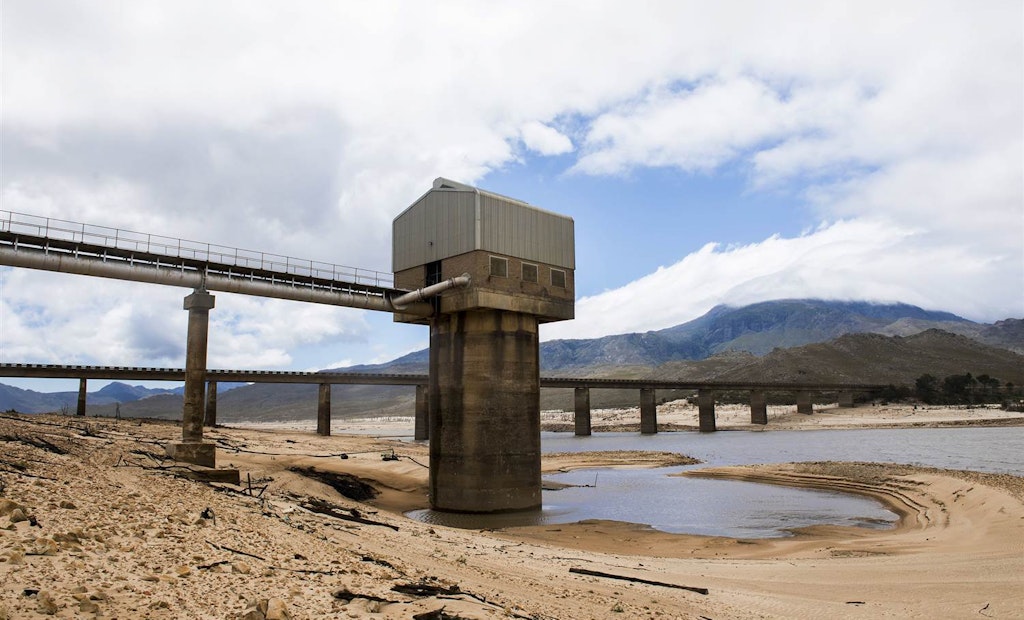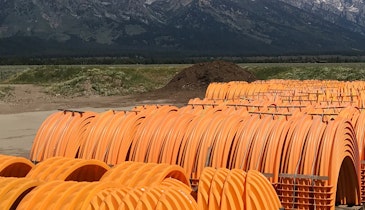
Cape Town relies heavily on six dams, including the Theewaterskloof Dam, which are all currently at extremely low levels. (Associated Press photo)
April 16. That’s the date currently being dubbed “Day Zero” in Cape Town, South Africa, when taps are expected to be shut off and the city’s 4 million residents will have to start picking up their water from one of about 200 collection points — a daily ration of 25 liters (6.5 gallons).
The six dams that supply most of the city’s water are expected to be dangerously low by that April 16 date, the reasoning behind the extreme rationing. Taps could remain off for up to six months to allow seasonal rains to begin replenishing the dams to more sustainable levels. Vital institutions like hospitals and schools will still have access to water.
The city is an example of what can happen when lengthy drought and poor water supply management and conservation collide. Dr. Piotr Wolski, a researcher with the University of Cape Town’s Climate System Analysis Group, says the current three-year drought is the worst on record, with rainfall in the last year being particularly low.
“This kind of drought is expected once in 300 years,” he wrote in a recent article published by the Daily Maverick.
Dams are on average 26.3 percent full, down from 41.1 percent full at the same time a year ago. Taps will be shut off when the dam levels drop to 13.5 percent full.
Compounding the issue is that more than one-third of the city’s overall drinking water usage is for commercial agriculture and industry, and conservation practices among Cape Town residents have varied. Residents reduced their overall usage from 800 million liters per day (211 million gallons) in early 2017 to 600 million liters per day (159 million gallons) by the end of the year. But even more conservation is needed and 60 percent of the population was still using more than the 87 liters per person daily limit (22.8 gallons) in January. That daily limit is being reduced to 50 liters per person (13.2 gallons) in February.
“It is quite unbelievable that a majority of people do not seem to care and are sending all of us headlong toward ‘Day Zero,’” Cape Town Mayor Patricia de Lille told the Irish Times.
In the long term, it will be important for Cape Town to diversify its water supply and get away from largely relying on rain-dependent sources like the six dams. Efforts to complete desalination plants and increase groundwater production are occurring, although slowly.
“The drier years are expected to be drier than they were, and the wetter years will not be as wet,” Wolski said of what climate models predict for the future.
Mike Muller, former director of South Africa’s Department of Water Affairs, told the New York Times that the city’s delay in finding new water sources has been “a major contributor to Cape Town’s troubles.”
“Nature isn’t particularly willing to compromise,” he says. “There will be severe droughts. And if you haven’t prepared for it, you’ll get hammered.”
Sources: The Irish Times; The New York Times





